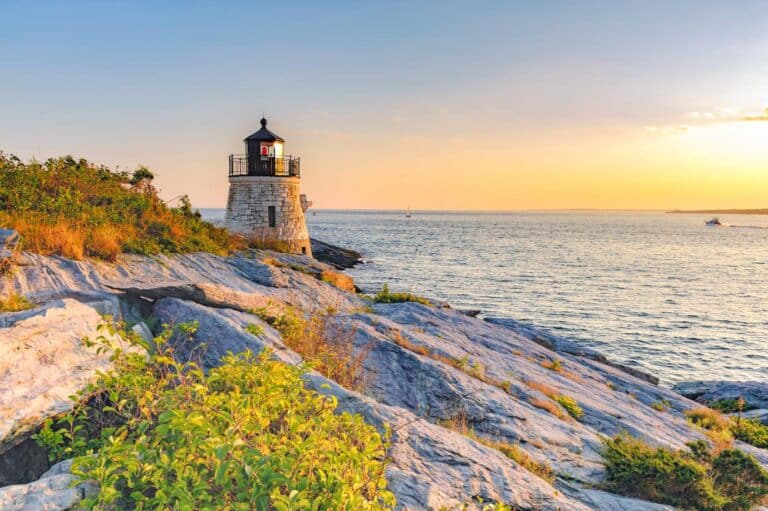Norway’s walking trails are ideal for those looking to combine nature, mindfulness and plenty of fresh air.
Pilgrim walks have been popular for centuries. Initially, they were done for religious purposes, but more recently, travelers have started taking these vacations in order to combine physical activity, sightseeing and a little soul searching. In Norway, where hiking is second nature, the most popular pilgrimage walk is St. Olav Ways—a unique experience that combines Nordic history with modern-day Norwegian culture. The walk highlights various landscapes, from the rolling agricultural areas to beautiful valleys to the challenging plateau of the mighty Dovre mountains. Plus, this pilgrimage experience means you’ll be staying at historical farms and B&Bs as well as eating farm-to-table fresh, locally-sourced meals.
What to Expect
The St. Olav Ways are eight historic pilgrim paths that have been used by travelers for centuries. In fact, for really adventurous travelers, and avid hikers, the full St. Olav Ways path goes through Norway, Sweden and Denmark—giving it the status of European Cultural Route. But for first time travelers, walking the Gudbranddalen path, which is the most popular path, is a great way to really experience the country—it takes you past a multitude of cultural sites and is dotted with scenic B&Bs. Plus, the trail ends on a high at the Saint Olav shrine in Nidaros Cathedral—one of the most important pilgrimage sites in the Nordic countries.
The pilgrim paths are quite long—400 miles from Oslo to Trondheim—so most travelers choose to do the walks in stages. It’s a great way to experience the diverse regions of Norway. With the national railway going more or less parallel with the path from Oslo to Trondheim, the train is a great way to shorten the distances, but still get a taste of the pilgrimage.
Where to Start
Travelers should fly into Oslo, Norway’s capital city, and spend a few days exploring here before starting the walk. Hit the Viking Ship Museum for some history and insight, and if you’re into art be sure to view Edvard Munch’s “The Scream” painting displayed in the Munch Museum, and then tour the National Museum of Art, Architecture and Design. If there’s time, catch a performance at The Norwegian National Opera & Ballet. After a few days of leisure, you’re ready for your walk to begin.
Take the train from Oslo to Gran and start the first day slowly, planning 2-3 hours of walking including exploring the Granavolden where you’ll visit the Sisters Churches, two medieval churches dating back to the 12th century. The larger church is named after the saint bishop Nikolaus of Bari, the patron saint of travelers. That night, stay at the Granavolden Gjæstgiveri (granavolden.no/eng) guest house which dates back over 300 years and is nestled in a beautiful, historic setting.
Culture, Walking and Sailing
The next day, combine walking with a sailing trip on the historic Skibladner—which has been sailing for 162 years. Dating back to 1856, this ship was originally built as an express passenger and goods service from the north to the south of the lake, but now it’s considered one of the country’s top visitor’s attractions. It’s the world’s oldest preserved paddle steamer and today operates as an historic living museum vessel. After spending the morning sailing, start the walking trek to the glass cathedral—a beautiful structure of steel and glass, known as the Hamardomen, one of the prettiest and most unique museums in the country. That night, stay at the Hoel Gård (hoel-gaard.no/), a beautiful historic estate located on the banks of Norway’s largest lake with amazing views of the surrounding green meadows and water views. The restaurant there serves fresh, local produce—many ingredients coming directly from the estate’s own garden—with a strong focus on traditional culinary favorites of the region.
Mountains and Cathedrals
From Hamar, take the train to Dovre, and spend your third day walking in a really beautiful crossing over the Dovre Mountain plateau, the mountain range in Central Norway that divides Eastern Norway and the area around Trondheim. The fresh crisp air, the well-maintained path and the beauty of the mountains make this day a favorite for many travelers. Finally take the train to the outskirts of Trondheim, making sure you walk the last stage of the pilgrimage. The last day, from Trøndelag to Nidaros Cathedral, is one of the longest walks—about five to six hours—and culminates in the highlight of the St. Olav Ways pilgrimage. Nidaros Cathedral is the world’s northernmost medieval cathedral and Norway’s national sanctuary. The cathedral is the burial church of St. Olav, the patron Saint of Norway. In addition to it now being one of Europe’s major historical pilgrim destinations, the church is the site of coronations and royal blessings each year.
Planning Your Trip
Travelers can book their walking pilgrimage through a tour operator; one we recommend is Viking Walks (vikingwalks.com). They will plan the meals, accommodations and daily walks, and transport baggage each day. Travelers should be in a moderate level of fitness, but of course the length and the duration of the walk each day can be tailored to your own pace. visitnorway.com



